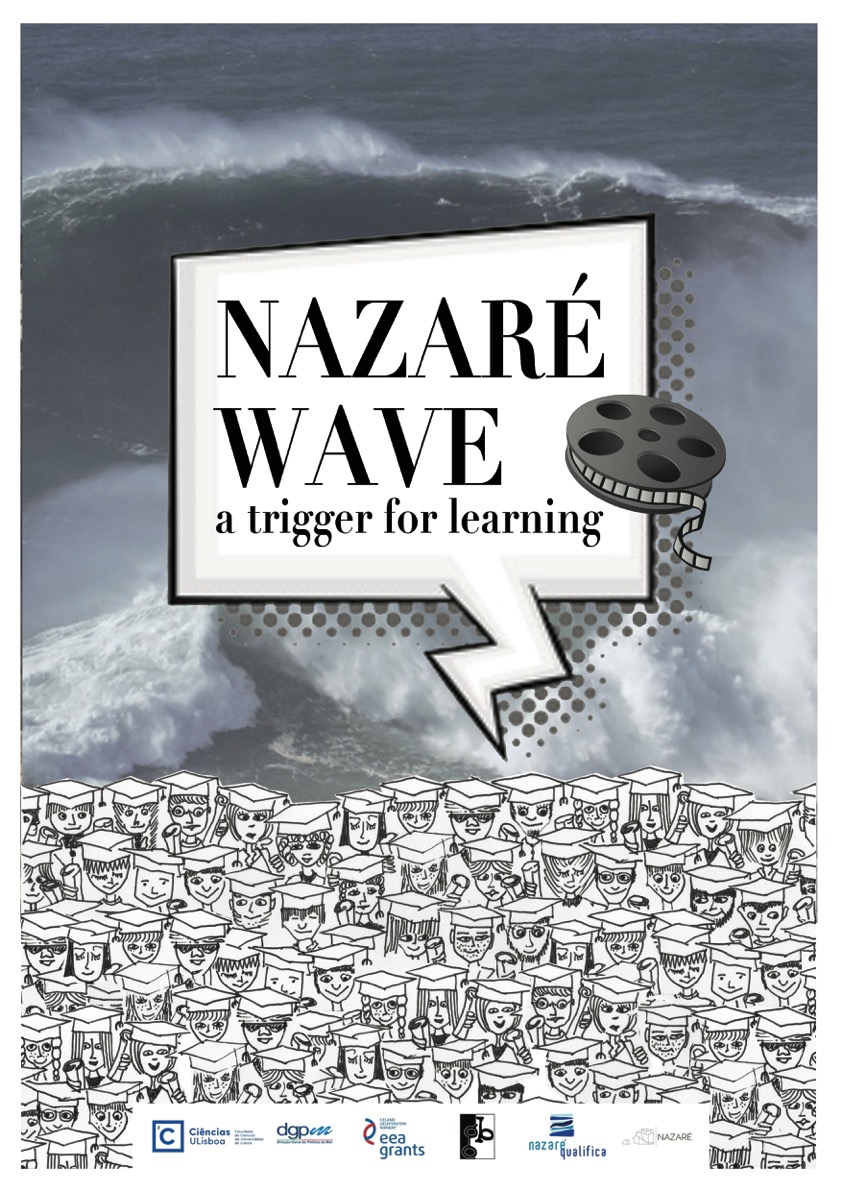17 May 2016
Triggers in science communication: getting the audience tuned in
Posted by Shane Hanlon

Cover of the movie “The Nazaré Wave”
This is a guest post by graduate student Mafalda Carapuco as part of our ongoing series of posts where we ask students to share their experiences in science communication.
Yes, we scientists are absolutely sure that science communication is important – that transferring scientific knowledge outside of our community is of vital importance for achieving a knowledge-based society engaged with science. But do people want to hear what scientists have to say? Is society tuned in to science? And if not, how can we capture our audience’s attention?
To overcome the communication gap between scientists and non-scientists, my colleagues and I decided to develop a project aimed at capture our audience’s attention. First, we needed to clearly identify our audience – and, to make things as challenging as possible, there was only one possible choice: high-school students (it cannot get any tougher than this…). Then, we defined our (unbeatable?) set of strategies. Strategy #1: finding the perfect communication trigger. An issue that high-schools students really want to know about, instead of something that we really would like to talk about. Or in an ideal situation – both. Strategy #2: framing the message to be conveyed in an appealing format, and in a way that makes it easier to grab the attention of the students (also a benefit if Strategy #1 fails). Strategy #3: ensuring students’ involvement, to foster their engagement with science, and to motivate others students to engage.

A scene from the movie “The Nazaré Wave”
“The Nazaré Wave: a trigger for learning” project uses these strategies, with the objective of improving ocean literacy and capturing high-schools students’ attention on the importance of scientific knowledge integration in ocean manag ement. In this project, the Nazaré Wave – the highest wave ever surfed (100 foot height!) – was used as the communication trigger as it is a very popular subject with young students and is given great media coverage. Short scientific animation videos voiced-over by the students were blended, resulting in the 5-minute movie “The Nazaré Wave”,
Results of using the Nazaré́ Wave as a communication trigger have been extremely positive and resulted in a successful engagement platform, not only with high-schools students, but also with the wider public – “The Nazaré́ Wave” movie had over 6.000 views in the first month of its release. As scientists, the most positive outcome from this experience was watching our effort result in such a positive experience for the student: learning with satisfaction – and now that they are tuned in to science, they want more. This eagerness for knowledge implies that we as scientists have to do more and better research to provide them answers. And the amazing thing about young students is that they want to know every single detail (ufff!).

Students and professors that participated in the project “The Nazaré Wave: a trigger for learning”
-Mafalda M. Carapuço is a PhD student at University of Lisbon. Her research focuses on the development of approaches to improve the transfer of scientific knowledge to non-scientific audiences.


 The Plainspoken Scientist is the science communication blog of AGU’s Sharing Science program. With this blog, we wish to showcase creative and effective science communication via multiple mediums and modes.
The Plainspoken Scientist is the science communication blog of AGU’s Sharing Science program. With this blog, we wish to showcase creative and effective science communication via multiple mediums and modes.
The movie “The Nazaré Wave :: a trigger for learning” is available on youtube: https://www.youtube.com/watch?v=PIM3bSRaaeI&feature=youtu.be.